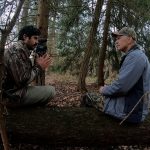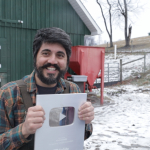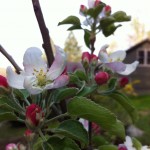I am so excited. I am working on a new project and I can’t wait to release it!
I mention it at the end of this video…
We have had some hard times this year. The worst of the worst as far as our homesteading life goes. After just 3 years with our favorite cow Ladybug, we found out she was sick with a horrible disease and we had to put her down.
How did this effect us? The most beloved farm animal we have owned, one that taught K and I so much about farming and homesteading, and she was put down at my own hand. Did it make me want to quit? Give up?
Yes. Honestly for a little while I felt that way.
But once the initial pain was passed, a strength kicked in, and I became more determined than ever to push forward. I can only attribute that to the fact that Homestead life builds resilience.
You see, when you are constantly trying to grow things, you are constantly at the same time losing things. You realize how fragile everything can be, and so you start to prepare for loss. Instead of planting one row of tomatoes, (like you did last year, and then lost your whole tomato crop to tomato horn worms) you plant 3 rows of tomatoes. And instead of planting all your tomatoes in the same row you plant them in a few different beds, at different times. Resilience. You realize things can go wrong, and you want to be ready for it.
And when you see your first destroyed tomato plant, you find the horn worm and feed it to your chickens, and successfully enjoy eating salsa all fall long because you new everything wasn’t going to be perfect, prepared for it, made the problem the solution, and moved on.
How does the tomato plant translate when it is a beloved animal, like your dear first milk cow?
Well… it is harder to lose a cow to a disease. No question.
But we didn’t just have 1 family cow. We didn’t sell the first calf she gave us, expecting everything to go perfectly. We kept her, Luna. And we kept her next calf too, Honeybee. And Luna had a calf, Grasshopper. So when we lost our queen cow, our princess Luna was ready to take the place of her momma, and the homestead moved forward.
Ladybugs last gift to us? A freezer full of grassfed beef (that is safe to eat, the disease she had is not present in the meat).






Hi I love your videos and have signed up for your email list, but I have a question. On one of your video’s with Kody (sp)? Creelman I thought he said Luna wasn’t likely to have Johnnes but they other were since they were younger and Ladybug was shedding by then so why are you breeding Grasshopper and Honeybee?
Liz, good question, since Johnnes shedding begins later in life, Grasshopper and Honeybee are less likely to spread it to their young until they reach the age of 3 or 4, and by then they can be tested to see if they have it.
If you want the least possible risk ever, then we would not breed them, but we are trying a medium risk high reward approach, with hopes that it pays off. Time will tell, and every farmer must make their own choice.